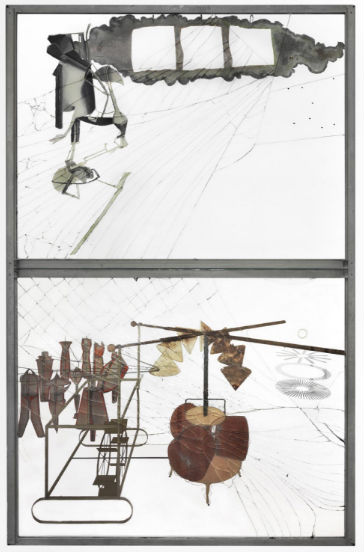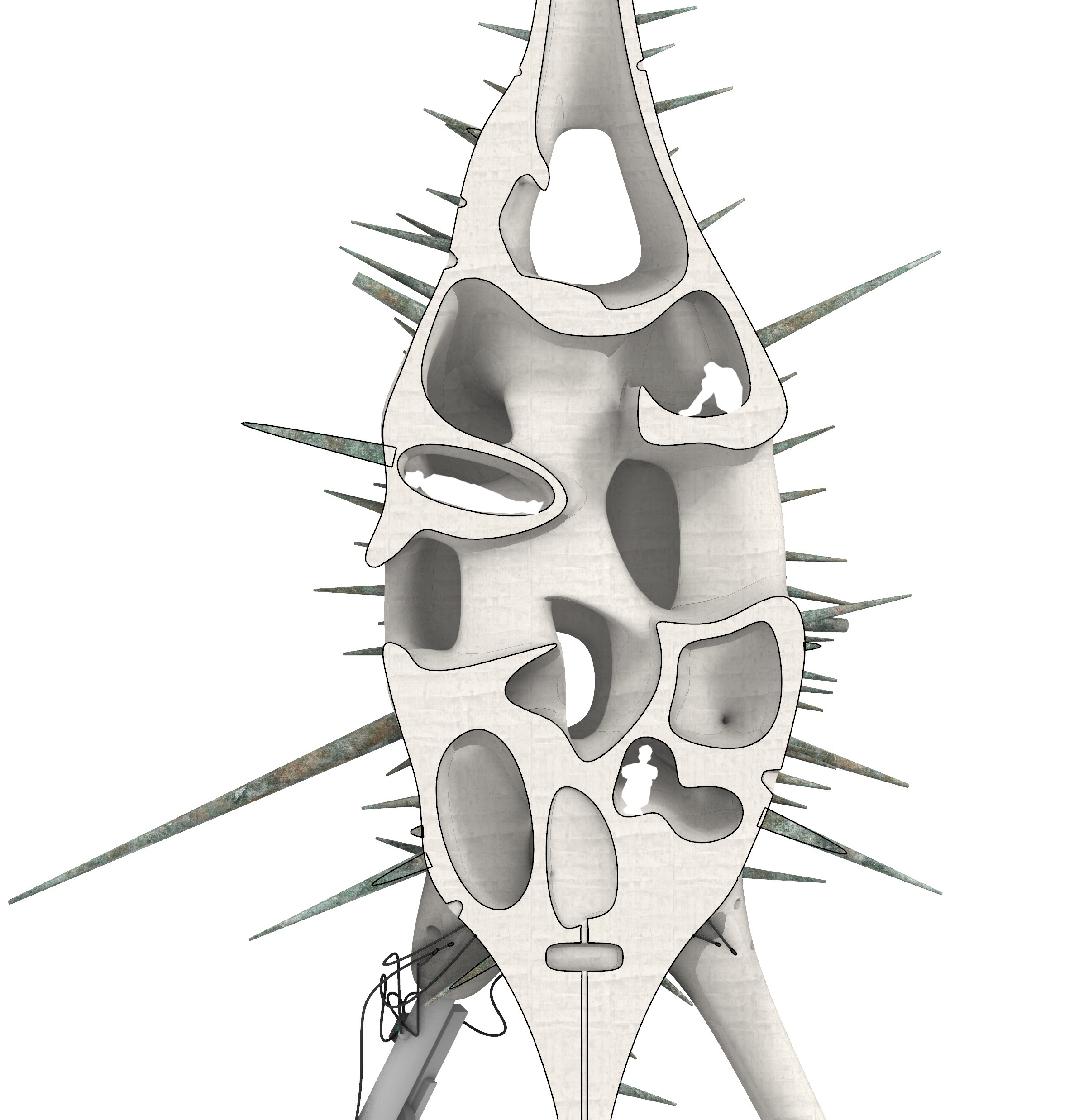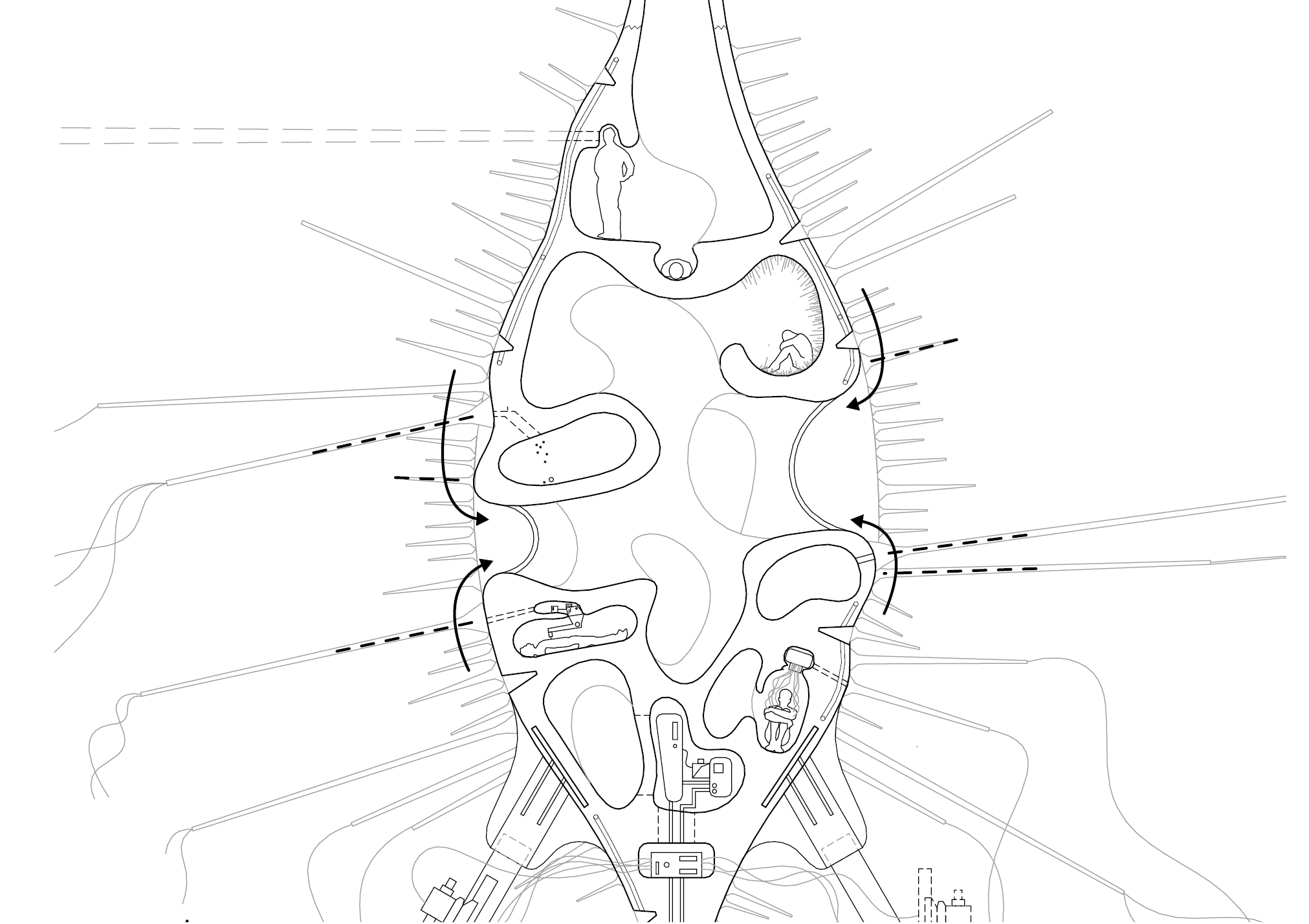THE PROJECT AS SENSING MACHINE
In order to further develop the shell, several philosophical concepts of the machine and the body have been investigated. These theories heavily ground the project and conceives the project as a sensing machine. These theories have been researched in order to understand the machine, their relationship to the environment and to the human.
Bachelor machines
Marcel Duchamp’s ‘The Bride Stripped Bare by Her Bachelors, Even’ (1915 – 1923) and the resulting Bachelor Machines speculate on the artwork as a machinal apparatus. The work consists of two realms, the feminine realm of the bride above and the masculine realm of the bachelors below, both desiring and imagining one another without any possibility of mutual comprehension. The desire of the bachelors generates production and activates its machinal apparatus as masturbation and pleasure. Desire is conceived of as a productive force. However, what is the desire of the machine? And what is its pleasure?
Desiring machines
In Anti-Oedipus (1972), French philosopher Gilled Deleuze and psychoanalysis Felix Guattari theorize about desire as a productive force as Desiring Machines. They see desire as a machine, and the object of desire is another machine connected to it. Machines want to connect with other machines to come into motion and to actualize themselves. They write: ‘The world is comprised of ‘machines driving other machines, machines being driven by other machines […] all the time, flows and interruptions.’[18] Desire, refers not to sexuality per se but to the will of the machine to connect to others and to proliferate the flows that run through it; it is linked to sexual desire but is not limited to it. It is a pleasurable force of appropriation of what is outside oneself incorporating into oneself. The desire of the machine is to connect to its environment and to humans.
Moreover, they write: ‘A careful dismantling of the organism through practices that include the hypochondriac body, the paranoid body, the schizo body, the drugged body, and the masochist body.’[19] However, what would a sensing body be like?
Body without Organs
In Capitalism and Schizophrenia, Deleuze and Guattari continue with their theory of the Body without Organs, which is a notion of the body that does not hinge on the singularity and the autonomy of each organ, but where organs would be indeterminate. It is a structure or zone without an imposed organization that can be sentient or inanimate. They write: ‘A body without organs is not an empty body stripped of organs, but a body upon that which serves as organs. The body without organs is not a dead body but a living body all the more alive and teeming once it has blown apart the organism and its organization. . . . The full body without organs is a body populated by multiplicities.’[20]
Deleuze and Guattari describe the Body without organs as a site of intensity where there are no organs but flows and intensities and it is a fusion of the internal and the external. They consider the body as a relationship between multiple smooth surfaces and as a reversible skin. The project is conceived of as a body without organs; as one continuous sensing body without an imposed organization, without distinction in structure and without distinction between the internal and the external.
The Fold
In ‘The Fold: Leibniz and the Baroque’[21] Deleuze sees folding as the expression of flows running through the machine. The concept of folding links the Desiring Machines to the Body without Organs where the intensity of flow is expressed in the structure. Through folding, there is a constant exchange between what is sensed on the exterior, and what is processed in the interior.
Folding creates an architecture of becoming where the sensing body slowly envelops the human body. As defined by the desiring machines, the machine wants to be appropriated by the body through plugging in.
In this sense, through folding and encapsulation of the human there is a fusion between the machine and the human. This generates a relationship of the human body within the sensing body where the project becomes a sensory extension of the human. Finally, through folding, like the Critical Zone, the project operates as one continuous body and as an entanglement between beings.
Logic of folding – Where sensed information (force) comes in, the shell folds inwards as an expression of the flows running through the machine.



